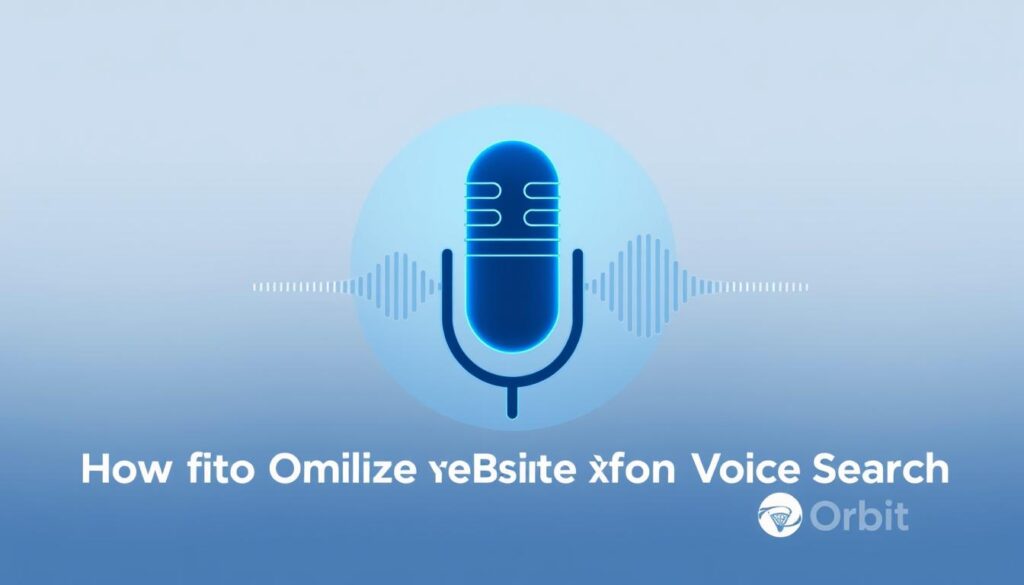Did you know that over 1 billion voice searches are conducted every month? This staggering statistic highlights the growing importance of voice search optimization for businesses looking to stay competitive in today’s SEO market.
As more people purchase smart speakers and use voice features on their mobile devices, the number of voice-activated searches continues to rise. In fact, over 50% of all internet searches are now voice-activated, and 28% of consumers in the US and UK use voice assistants daily.
At CoWrit Technologies Inc, we understand the significance of adapting to this shift in search behavior. Our comprehensive services, including AI Generative Applications Prompt Engineering and Content Writings, can help you leverage voice search technology effectively.
Key Takeaways
- Understand the growing importance of voice search optimization for businesses.
- Learn how to adapt your SEO strategy to voice-activated searches.
- Discover the benefits of using voice search technology for better user experiences.
- Explore comprehensive strategies to optimize your website for voice search.
- Stay ahead of competitors by leveraging voice search technology effectively.
The Voice Search Revolution
The rise of voice search is transforming the way we interact with technology, making it more natural and intuitive. As we continue to embrace voice-activated devices, it’s clear that this trend is not just a passing fad but a significant shift in how people access information online.
Current Voice Search Statistics
Voice search adoption has been rapid, with 55% of U.S. households expected to own a smart speaker in 2022. This represents a fundamental shift in how people access information online. About 20% of mobile searches are done using voice, highlighting the growing preference for hands-free search options.
| Statistic | Percentage |
|---|---|
| U.S. households owning a smart speaker in 2022 | 55% |
| Mobile searches conducted using voice | 20% |
| Consumers using voice search for local business information | 58% |
Why Voice Search Is Growing
Voice search is growing rapidly because it offers a more natural, efficient way to search compared to typing, especially when users are multitasking or on the go. The convenience factor is driving adoption, as 72% of voice search users have integrated it into their daily routines, making it a habitual way to interact with technology.
- Voice search adoption is driven by its convenience and ease of use.
- The increasing affordability and accessibility of voice-enabled devices have accelerated adoption across diverse demographic groups.
- For businesses, developing a voice search strategy is no longer optional but essential to remain competitive in the evolving search landscape.
Understanding Voice Search Technology
Understanding voice search technology is key to unlocking its full potential for your online presence. Voice search is not just a trend; it’s a rapidly evolving technology that is changing how we interact with our devices and access information.
Google Assistant vs. Siri vs. Alexa
The voice search ecosystem is dominated by three major players: Google Assistant, Apple’s Siri, and Amazon’s Alexa. Each of these voice assistants has distinct approaches to processing voice queries. Google Assistant and Siri primarily pull search results from Google, though Siri also accesses information from Yahoo, Bing, and Apple’s third-party apps. Alexa, on the other hand, relies primarily on Bing for search results.
- Google Assistant: Pulls information mainly from Google, making it a powerful tool for those already optimized for Google search.
- Siri: Accesses Google, Yahoo, Bing, and Apple third-party apps, creating a diverse search environment.
- Alexa: Uses Bing for search results, highlighting the importance of optimizing for multiple search engines.

How Voice Search Algorithms Work
Voice search algorithms utilize natural language processing (NLP) to interpret user queries, focusing on understanding conversational language rather than just keyword fragments. These algorithms prioritize featured snippets, knowledge graphs, and direct answers that can be easily read aloud to users seeking information.
As voice search technology continues to evolve, improvements in speech recognition accuracy, context understanding, and personalization capabilities are becoming more pronounced. For optimal results, implementing a comprehensive voice search optimization strategy that addresses the unique characteristics of all major voice assistants is recommended.
How to Optimize Website for Voice Search
With voice search on the rise, it’s essential that we rethink our approach to SEO and focus on conversational keywords. As we explore the world of voice search, we need to understand the fundamental differences between voice and text searches to optimize our website effectively.
Key Differences Between Voice and Text Searches
Voice searches tend to be longer and more conversational than text searches. For instance, a user might type “pumpkin pie recipe” into a search engine, but with voice search, they would more likely say, “How do I make pumpkin pie?” This shift towards conversational keywords is a result of Google’s Hummingbird update, which transformed the search engine into an “answer engine.” Understanding these differences is crucial for effective voice search SEO.
The way we conduct searches changes based on our location and what we’re looking for. Voice search users typically expect immediate, direct answers to their queries. This means our content should be optimized to provide concise and relevant information.
| Search Type | Characteristics | SEO Implications |
|---|---|---|
| Text Search | Shorter, keyword-focused queries | Traditional SEO strategies |
| Voice Search | Longer, conversational queries | Focus on natural language patterns and intent |
Voice Search User Behavior
Voice search user behavior is significantly influenced by the context in which they are searching. Many users conduct voice searches while on the go or multitasking, leading to more context-dependent queries. User behavior analysis shows that voice searches often fall into specific intent categories: informational, navigational, transactional, or local.
When optimizing our website for voice search, we need to consider these different contexts and tailor our optimization strategy accordingly. Voice search queries typically have higher conversion intent because users are often seeking immediate solutions or specific information.

By understanding these aspects of voice search user behavior, we can create content that is more relevant and engaging for our users, ultimately improving our website’s visibility and user experience.
Mastering Conversational Keywords
Mastering conversational keywords is crucial for effective voice search optimization. As we continue to adapt to the voice search revolution, understanding how to leverage conversational keywords becomes increasingly important.
Finding Voice Search Keywords
To find voice search keywords, we need to think about how people naturally speak when using voice assistants. This involves focusing on phrases that are typically 5 words or longer and structured as complete questions or conversational statements.
Tools like AnswerThePublic and Ubersuggest can help us discover question-based keywords that align with how people naturally ask for information using voice search.
Implementing Long-Tail Keywords
Long-tail keywords are particularly valuable for voice search SEO because they match the conversational nature of voice queries and often have less competition than shorter keywords. By implementing long-tail keywords throughout our content, we help search engines understand the context and relevance of our information to specific voice queries.
Creating content that naturally incorporates these conversational keywords will improve our chances of appearing in voice search results without sounding forced or unnatural. We should also consider mining our customer service interactions, live chat logs, and FAQ sections to identify the actual questions our audience asks about our products or services.
Creating Content for Featured Snippets
To dominate voice search results, it’s crucial to understand the importance of featured snippets. According to Brian Dean’s study, a significant 40.7% of voice search results came from featured snippets. This statistic underscores the need to optimize content for these coveted “position zero” placements in search results.
Featured snippets are crucial for voice search success because they provide direct answers to users’ queries. By optimizing for featured snippets, we can improve the odds of our content being selected for voice search results. So, how do we optimize for featured snippets? The key lies in leveraging structured data and creating well-structured content.

Position Zero Optimization
Position zero optimization focuses on structuring content to directly answer specific questions in a format that search engines can easily extract and present as featured snippets. To achieve this, we need to identify common questions related to our industry or products and provide clear, concise answers.
Research shows that Google tends to favor featured snippet answers that are approximately 29-30 words in length for voice search results. This means we should aim to provide answers that are concise yet informative.
Structuring Answers for Voice Search
When structuring answers for voice search, it’s essential to prioritize clarity and directness over marketing language or unnecessary details. We should use clear headings, bulleted or numbered lists, and tables to make it easier for search engines to identify and extract relevant information.
For example, creating a dedicated FAQ section on our website can be an effective strategy for capturing featured snippets, as this format naturally aligns with how voice search queries are structured. Questions that begin with “how,” “what,” “why,” “when,” and “where” are particularly valuable targets for featured snippet optimization.
| Optimization Technique | Description | Benefit |
|---|---|---|
| Use schema markup | Leverage structured data to help search engines understand content | Improves chances of being selected as a featured snippet |
| Structure content with clear headings | Organize content to directly answer specific questions | Makes it easier for search engines to extract relevant information |
| Create concise answers | Provide answers that are approximately 29-30 words in length | Increases chances of being selected as a featured snippet for voice search |
“The best way to get your content featured is to be the best answer to a question.”
Implementing Schema Markup for Voice Search
Voice search optimization isn’t complete without the implementation of schema markup. Schema markup, or structured data, is code that helps search engines understand our website better, thereby boosting our chances of ranking for voice searches and appearing in special search results.
By adding schema markup to our website, we provide search engines with additional context about our content, which is crucial for voice search results. This structured data helps search engines understand the context and relationships within our content, making it easier for them to match our information with relevant voice queries.
Types of Schema for Voice Search
Different types of schema markup are relevant for voice search, including LocalBusiness, Restaurant, Product, FAQ, HowTo, and Event schemas. These schemas provide structured data about our business and content, making it easier for search engines to match our information with relevant voice queries.
For local businesses, implementing LocalBusiness schema with accurate information about our hours, address, phone number, and services is particularly valuable for voice search optimization.
Speakable Schema Implementation
Speakable schema is a relatively new markup specification designed specifically for voice search, allowing us to indicate which portions of our content are most suitable for voice assistants to read aloud. Although it’s currently limited to news articles in beta, its development signals the growing importance of voice-specific optimization in search engine algorithms.
Implementing schema markup requires adding specific code to our website that identifies different elements of our content in a way that search engines can easily process and extract. We can implement schema markup through JSON-LD, Microdata, or RDFa formats, with JSON-LD being the easiest to implement and maintain.
Local SEO Strategies for Voice Search
With the rise of voice-activated devices, optimizing for local search has become a key factor in a successful digital marketing strategy. Many voice searches are local, such as “coffee shops near me” or “directions to the nearest gas station.” To capitalize on this traffic, businesses must focus on local SEO.
Local SEO is particularly important for voice search optimization as research shows that 58% of consumers use voice search to find information about local businesses. To take advantage of this trend, we need to ensure our online presence is optimized for local searches.
Optimizing Google Business Profile

Optimizing your Google Business Profile is essential for voice search success, as voice assistants often pull business information directly from this source when responding to local queries. We should ensure our business name, address, phone number (NAP), business hours, and category selections are accurate and consistent across all online platforms to improve our local search visibility.
To optimize our Google Business Profile, we need to claim and improve our listing. This includes ensuring that our business hours, address, and phone number are accurate and up-to-date. Encouraging satisfied customers to leave reviews is also crucial, as these can appear in voice search results and improve our business’s prominence.
“Near Me” Search Optimization
“Near me” searches are extremely common in voice search, with users frequently asking for businesses, services, or products in their immediate vicinity. To optimize for “near me” searches, we should focus on local keywords, neighborhood names, and landmarks in our content while ensuring our Google Business Profile accurately reflects our location.
We can improve our visibility for “near me” searches by considering distance, relevance, and prominence to the search. Creating content and pages for each location, adding Google Maps to our website, and using local keywords can also enhance our local search visibility.
Technical Aspects of Voice Search Optimization
Technical optimization is key to ensuring your website performs well in voice search results. As voice search continues to grow, it’s essential to focus on the technical aspects that can make or break your website’s visibility in search engine results.
Improving Website Speed
Website speed is a critical factor in voice search optimization. Voice searchers expect quick answers, and slow-loading websites can lose them. To improve your website’s speed, use tools like Google’s PageSpeed Insights or GTmetrix to check your load times and identify areas for improvement.
Some effective strategies for speeding up your site include compressing images, minifying CSS and JavaScript, leveraging browser caching, reducing redirects, and upgrading your hosting. Evidence suggests that page speed plays a vital role in voice search SEO, with the average voice search result page loading in under five seconds.
Mobile-Friendly Design
A mobile-friendly design is essential for voice search optimization, as many voice searches are performed on mobile devices. A responsive design ensures that your website functions properly across all devices, which is crucial for voice search users who may be directed to your site from various devices.
Moreover, technical accessibility features that make your website accessible to users with disabilities also make your content more accessible to search engine crawlers. Implementing a secure HTTPS connection is another technical factor that can positively impact your voice search rankings, as search engines prioritize secure websites.
Conclusion
In today’s digital age, a comprehensive voice search optimization strategy is no longer a luxury, but a necessity. As we’ve explored throughout this guide, optimizing your website for voice search involves a multifaceted approach that addresses both content-related factors and technical aspects.
A successful voice search optimization strategy should include conversational keywords, featured snippets, and schema markup, among other elements. By implementing these strategies, businesses can improve their visibility in voice search results, drive more traffic to their website, and enhance overall user experience.
At CoWrit Technologies Inc, we offer comprehensive services to help businesses develop and implement a customized voice search strategy. Our team of experts can assist with AI Generative Applications Prompt Engineering, Content Writings, Website Designs and Developments, Graphics Designs, Digital Marketing, eBooks Writing, and Ad Campaigns. To learn more about how we can help you, contact us via WhatsApp at +44-7822010953.
As voice technology continues to advance, businesses that prioritize voice search optimization now will be better positioned to adapt to future developments in search technology. By starting with the most impactful strategies, such as optimizing for featured snippets and improving local SEO, and then moving on to more technical optimizations, businesses can stay ahead of the curve.
Remember, optimizing for voice search is an ongoing process that requires regular monitoring, testing, and refinement. By investing in a comprehensive search optimization strategy, businesses can reap multiple benefits, including improved overall SEO, better user experience, and increased accessibility.


